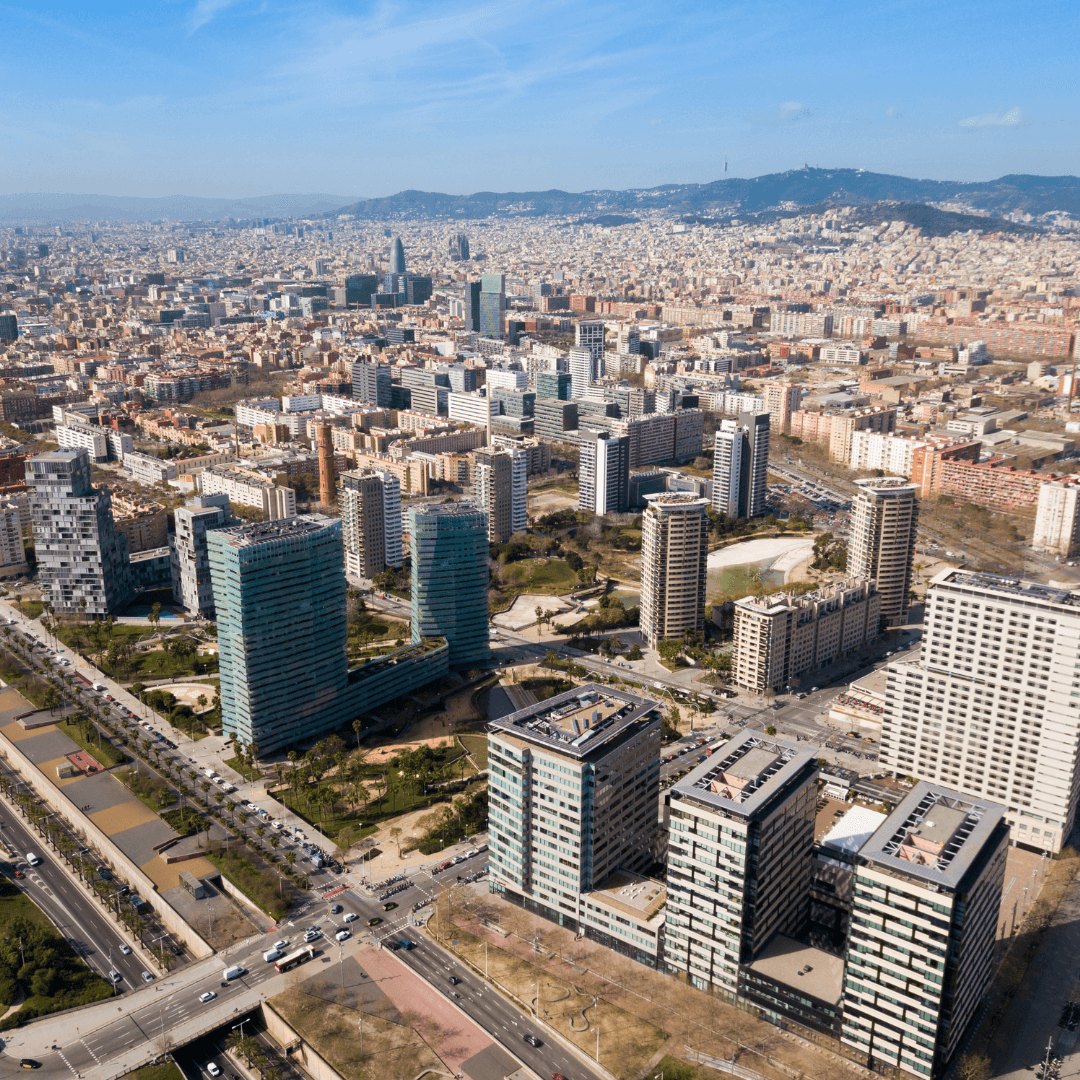In recent decades, the structure and character of cities have undergone a significant change, where urban transformation has led to the revitalization of areas previously relegated to the periphery.
Barcelona and Madrid, two of the main cities in Spain where Renta Corporación operates, are prominent examples of this trend. In this Renta Insights article, we will explore how these two metropolises have adapted over time to the needs of the new generations.
The renaissance of the periphery
A few decades ago, the peripheral areas of Barcelona and Madrid used to be forgotten spaces, characterized by a lack of investment and the deterioration of their structures. However, thanks to a bold vision and great strategic planning, a transformation process began that has given these areas a revival. Local governments and private investors are increasingly committed to innovative urban projects that promote the rehabilitation of obsolete buildings, the creation of new public spaces and the promotion of cultural and leisure activities.
The renovation of industrial spaces in urban transformation
Both Barcelona and Madrid had extensive industrial areas that, over time, became obsolete. Instead of abandoning these spaces, they have been converted into vibrant cultural zones and business spaces. For example, in Barcelona, the Poblenou district has gone from being a former industrial zone to a technological and creative epicenter, attracting new companies and international talent.
Madrid Río is a clear example of sustainable urban development. A renovation project that transformed an old elevated highway (M-30) into an extensive linear park on the banks of the Manzanares River. It created public spaces, green areas, trails for walking and biking, playgrounds, and venues for cultural and sporting events. The Madrid Río project has managed to improve the quality of life of residents, reduce pollution and unite areas previously separated by the motorway, fostering social cohesion for residents and visitors.
The importance of public transport
A fundamental component of the urban transformation has been the development and improvement of public transport connections in both cities. The creation of metro networks, tram buses and shared sustainable vehicle systems have efficiently connected peripheral areas with the center, facilitating mobility and reducing dependence on the car.
Green spaces and quality of life
Urban revitalization in these areas has led to increased attention towards the creation of green spaces and recreational areas. Both Barcelona and Madrid have increased the number of parks and squares, providing their inhabitants and visitors with places to relax, play sports and enjoy nature. This, in addition to implying an improvement in the quality of life, has attracted more people who seek to leave the city center to live, promoting coexistence and diversity.
The tourism boom
This transformation of cities has also had a significant impact on tourism. With the revitalization of previously abandoned areas, new attractive spaces have been created for visitors seeking authentic and cultural experiences. The peripheral neighborhoods now offer a wide range of gastronomic, artistic and entertainment options, which has increased the tourist attractiveness of Barcelona and Madrid.
The history of these two cities shows us that, with vision, strategic planning and community participation, it is possible to transform and revitalize any city, allowing it to adapt to the changing needs of society.

